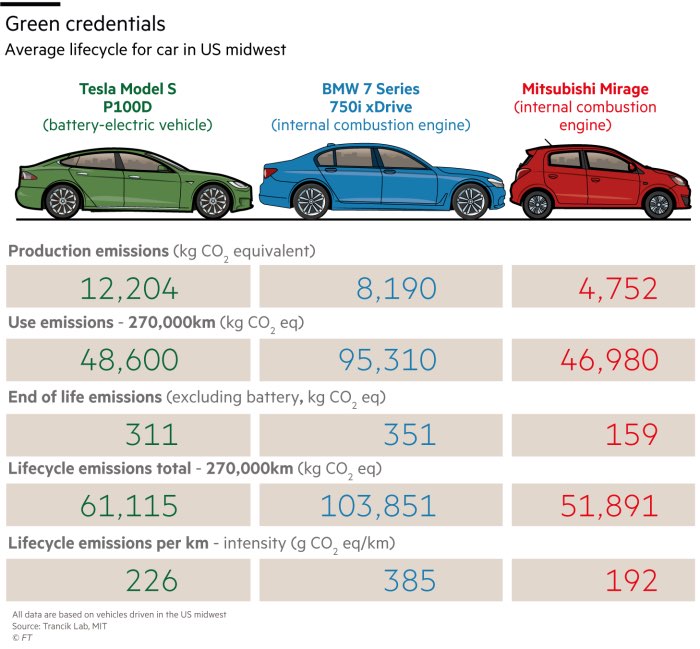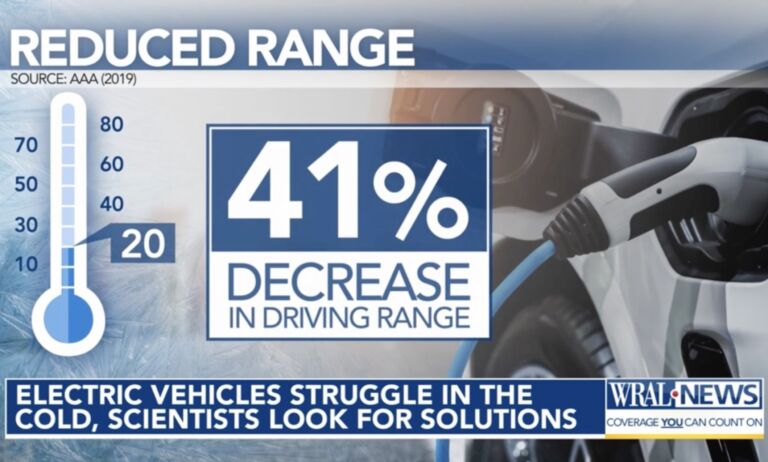In fact, over their lifetime, they are responsible for more emissions than some regular cars with internal-combustion engines. Financial Times reports:
According to data from the Trancik Lab at the Massachusetts Institute of Technology, a Tesla Model S P100D saloon driven in the US midwest produces 226 grammes of carbon dioxide (or equivalent) per kilometre over its lifecycle — a significant reduction to the 385g for a luxury 7-series BMW. But the [Mitsubishi] Mirage emits even less, at just 192g.
The MIT data substantiate a study from the Norwegian University of Science and Technology last year: “Larger electric vehicles can have higher lifecycle greenhouse gas emissions than smaller conventional vehicles.”
Reading further in, you see that the disparity is in the pretense that emissions only happen at the tailpipe. As this graph from the article shows, however, it’s not as simple as that. Government policies promoting electric vehicles to lower emissions are therefore making a key error. (By “key error,” I mean erring on their own premise, notwithstanding the ridiculousness and soft tyranny of the premise itself.)

A tale of unintended consequences
This combination — government policy failing due to unintended negative consequences, while competition and market forces producing the desired result as an unintended positive consequence — is a common occurrence. I’ve written about it with respect to electricity generation, energy exploration, helping the poor, and most recently, transportation.
People who care about results (as opposed the higher narcissism of merely presenting the public show of caring) should pay attention.
I liked this from the article:
The point of such comparisons is not to make the argument for one technology over another, or to undermine the case for “zero-emission” cars.
Right. Let consumers choose according to their own perceptions of their needs and wants. Only a presumptive fool would think he can choose the right vehicle for every person in the world. But this next sentence:
But they do raise a central issue about the industry: are governments and carmakers asking the right questions about the next generation of vehicles?
I would think appealing to consumer tastes would be a centraler issue. As described above, competition and market forces are producing results that governments aren’t.


